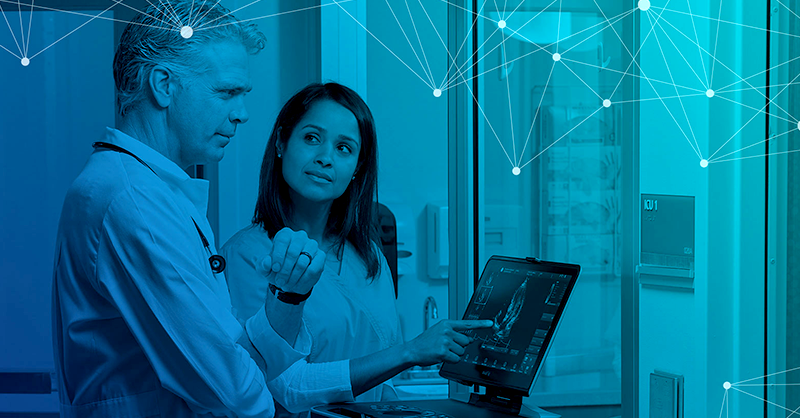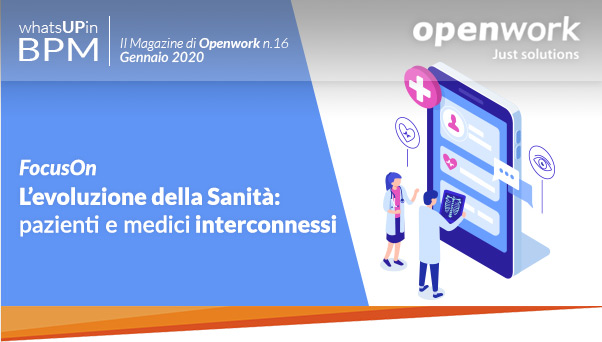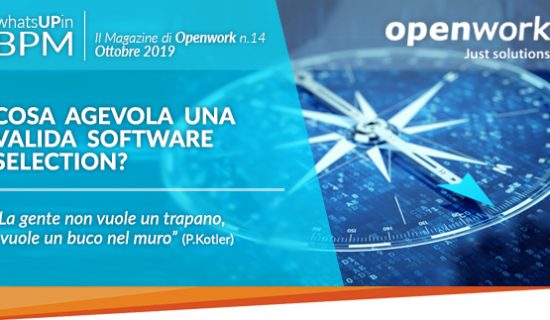
Editorial by:
Piero Cosoli - Senior Program Manager Openwork
Integrated Health Platform: integration makes the cure
The intensification of significant demographic trends, including the progressive aging of the population, and the change in morbidity toward a higher incidence of chronic disease are changing (and will significantly change) the characteristics and intensity of citizens' health and care needs. The most advanced approaches envision the patient at the center of a diagnostic-therapeutic-care pathway (PDTA) whose continuity is guaranteed even though parts of this process may be carried out in different places, by different professionals, at different times.
PDTAs represent a clinical and organizational management tool used to define the best diagnostic-therapeutic-assistance process aimed at responding to specific health needs based on recognized recommendations (guidelines) by adapting them to the local context, and, in particular, to the organizational processes and resources available with the support of appropriate digital technologies that facilitate their adoption, management and verification of results
The effective use of ICT tools, in fact, represents a truly powerful solution for governing the continuity of health care, in the management of care processes, in the sharing and management of health care records, and in the support and monitoring of the patient during the diagnostic and therapeutic pathway in which he or she is placed.
Digital technologies are an enabling factor in multiple areas:
- Promoting access to services for prevention (e.g., apps for lifestyle monitoring or screening...)
- Facilitating communication among healthcare providers and reducing the risk of error (e.g., electronic medical records, PDTA pathways...)
- making it easier and easier through the Internet and mobile networks:
- The physician-patient dialogue (e.g., televisit, teleconsultation)
- The collection, networking, and remote monitoring of medical information and its use (e.g., telemonitoring of vital parameters)
- The integration of different mobile devices,
- Data accuracy and security,
- The dialogue between the different apps and the social and health information system
- Making innovative technologies available to users (e.g., IoT, wearables,) and clinicians (robotics, diagnostic decision support...)
- Making care pathways more controlled and efficient (e.g., PDTA pathways...)

Architecture of an Integrated Health Platform
A holistic approach includes defining an ICT health platform as an integrated eco system of the 3 application components shown in the figure
- A PDTA modeling and management platform based on the BPM Platform
- A telemedicine and teleconsultation platform based on the extended Multichannel Communication platform with a mobile interface that also allows its use from the territory and with data acquisition connectors from medical devices allocated at the patient's home
- An integration layer open to interoperability with regional health systems, with other information systems according to standard protocols
The designed health platform has technical and architectural features that meet state-of-the-art performance, integration and security requirements viz:
- It has a web-based architecture and a responsive user interface
- Exposes its core services via RESTFul API interfaces
- It is adherent to the security and safety requirements of the GDPR
- Manages security through appropriate authentication and authorization mechanisms and information visibility policies based on Roles
- It is integrable and interoperable with other health systems
- It is extendable, without programming intervention, to manage other clinical streams
- It is compliant with HL7, FHIR, XDS, CSV, XML, Web services and APIs standards.
The Jamio openwork platform has been used as a BPM platform in PDTA management projects in heart failure and neurodegenerative diseases for modeling and monitoring of customized care pathways on patients taken care of
2020 under the banner of Big Data and Cybersecurity

Interesting new perspectives for this 2020 in Digital innovation, as illustrated by research carried out by the Digital Transformation Academy Observatories and Startup Intelligence of the School of Management of the Politecnico di Milano, with the collaboration of PoliHub.
The extrapolated data show that it will be mainly large companies that will allocate digital investments and that they will do so especially for the hottest times of the moment: above all Big Data and Cybersecurity.
Remain behind - unfortunately - the investments of SMEs, with only 23% compared to the 45% planned by large companies; also worth mentioning is the important introduction in organizations of the professional figure of theInnovation Manager, a role increasingly taken into consideration also in light of the facilities promoted by the state to speed up the digital transformation of Italian industry and bring it on par with that of other European countries.
Cybersecurity itself was the focus of our BPM Magazine No. 15 of December (editorial by Alessandro Cortese, Cloud Architect at Openwork); a very interesting topic and indicated especially for those enterprises that manage large amounts of data and need the appropriate security measures to protect them from illicit tracking or attacks by Hackers.
So lights and shadows on the digital outlook for 2020, with large organizations always in the forefront of making the leap and SMEs instead gradually reacting to the changes imposed by the market by giving small and slow signs of growth.
Innovation is built at home:
the interesting case of a company operating in the Healthcare sector

Among the interesting Digital Transformation stories, here is a success case that originated from the integration of a BPM Cloud platform. This is Predict, a company that markets ultrasound and radiological diagnostic imaging systems and develops innovative technologies in the Healthcare sector.








